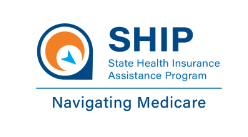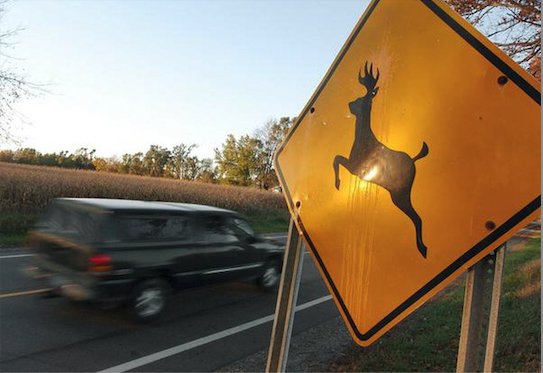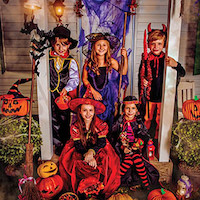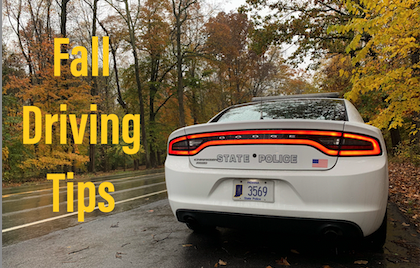
All Medigap Plans available open for those under 65 with Medicare.
A new bill, SEA 215 was introduced and passed in Indiana in Spring of 2024. Beginning January 1, 2025,
there will be guaranteed issue into medigap plans for people under 65. What does this mean? This means
that after December 31, 2024, any Medicare Supplement Plan (Medigap) that is available to those with
Medicare will also have to provide that same plan, or an equivalent, available for those with Medicare due to
disability or ESRD.
Anyone on Medicare under the age of 65 prior to January 1, 2025 will have a six month window to sign up for
a Medigap Plan, guaranteed. This would be January 1 – June 30, 2025.
Anyone enrolling into Medicare under the age of 65 AFTER January 1, 2025 will be granted their own six
month guaranteed enrollment window starting from the first day of the month their Medicare begins.
Beginning January 1, 2025, the following rules will apply to health insurance providers:
• Issuers may not deny or condition issuance of Medicare supplement policy because of health status,
claims experience, receipt of health care, or medical condition of an individual.
• Issuers may not charge a premium rate for Plans A, B, or D that exceeds the premium rate an issuer
charges to those age 65 for same Medicare supplement policy.
• Issuers may not charge a premium rate for any other standardized letter Medicare supplement policy
that exceeds 200% of premium charged to those age 65 for the same Medicare supplement policy.
• Issuers may not issue policy that contains a waiting period or preexisting condition limitation or
exclusion.
If you have questions about the SEA 215 bill or anything else related to Medicare, contact SHIP for free,
impartial assistance.
The State Health Insurance Assistance Program (SHIP) is a free and impartial health insurance counseling
program for people with Medicare. SHIP does not sell insurance. SHIP is provided by the Administration for
Community Living and the Indiana Department of Insurance. We are part of a federal network of State Health
Insurance Assistance Programs located in every state. All of their services are free.

In response to an article from the Indiana State Police on "Safe Driving Tips," a reader shared updated data that there were actually 1.8 million deer/vehicle accidents from July 2022 to June 2023.
Patricia Gomez, Assistant Outreach Manager of the World Animal Foundation, an animal advocacy group, shared a link to the organization's website, which covers a variety of topics pertaining to deer. Data provided covers all of the United States, with some information from Canada and Asia, as well.
Readers may access the website at: https://worldanimalfoundation.org/advocate/deer-accidents-statistics/.

Many parents find that anywhere between ages 11 and 13 are good times to let their children go trick-or-treating with friends. However, this decision may be based on several factors.
Kids go through many rites of passage throughout childhood. There is the first time they go to school and leave parents behind for several hours per day. Another rite is sleeping over at a friend or family member's house or even summer camp. Still another may be being allowed to attend a movie alone with a friend. Small rites of passage signify a child is getting older and is ready for more responsibility and trust. Such may be the case when parents conclude that their children are ready to engage in Halloween fun without an adult chaperone.
There is no set age when a child can walk around the neighborhood trick-or-treating unattended. Just as with other tests of responsibility, such as staying home alone or being able to ride bikes with friends, it is up to parents to gauge their youngsters' readiness. Halloween for older children often is less about candy and more about hanging out with friends. Therefore, parents probably needn't worry that their kids will be traveling solo since a large group of children will likely be visiting homes together. Many parents find that anywhere between ages 11 and 13 are good times to let their children go trick-or-treating with friends. However, this decision may be based on several factors.
· Time of day: It's best to limit a first time trick-or-treating without parents to daylight hours. What looks familiar during the day may be less familiar after sunset. It's generally safer for kids to be out and about before night falls.
· Other participants: Parents should weigh the personalities of their kids' friends as well. For those who are assured that others in the group are mature and responsible, there's no need to continue to clip the proverbial wings of trick-or-treaters. But if parents are leery of any shenanigans that may take place, it may be better to wait things out a little longer.
· The neighborhood: Is the area relatively safe with limited vehicle traffic? If so, then parents may feel more comfortable letting kids on the younger range of that age spectrum trick-or-treat without them. Urban neighborhoods or ones where houses are separated by a lot of land may warrant some adult supervision.
· Constant contact: Parents who utilize GPS apps to keep tabs on their children's whereabouts may feel more comfortable letting them trick-or treat with friends. These apps will show exactly where the child is at the time and can trace the route kids take. Many children get smartphones while young, which can alleviate concerns about getting in touch or keeping track of kids left to their own devices.
When to let kids go out trick-or-treating without adults is a decision each family needs to make based on their unique circumstances and preferences.

By Sgt. Carey Huls, Public Information Officer, Indiana State Police Sellersburg District
Halloween, pumpkin spice, football...Fall is upon us. But costume parties and football rivalries are not the only things for which we need to prepare. Falling leaves and colder temperatures are making their appearance as well. With these changes come driving hazards more unique to autumn than other times of the year.
According to the Institute of Highway Safety, autumn typically brings a sharp increase in the amount of car versus animal insurance claims, most of those being deer. These claims usually peak in the month of November and decrease through December and January. Wet leaves, colder temperatures, and an increase in rainfall also add to the mix.
Your friends at the Indiana State Police Post in Sellersburg would like to remind you of these tips as you navigate our changing roadways:
- WET LEAVES: Wet leaves can be as slippery as an ice-covered roadway. Drive slowly on leaf-covered roads and avoid hard braking. Also, don't forget that leaves can obscure lane and roadway markings, so make sure to pay attention to the edge of the roadway and stay in your lane.
- RAIN AND FOG: Wet roads are slippery and may lead to hydroplaning. Increase your following distance, and don't use cruise control. If it's foggy, use your low beams or fog lights and avoid using high beams.
- BRIDGES AND OVERPASSES: Any roadway not in direct contact with the ground can freeze quickly. Morning frost can leave icy patches, and shaded areas may remain icy after other parts of the roadway are dry.
According to the National Highway Traffic Safety Administration, there are approximately 1.5 million deer-vehicle collisions each year. According to insurance industry statistics, Indiana usually ranks in the middle of all 50 states and was 24th in 2021 in car versus animal crashes. In 2021, the odds for a car/animal crash were 1 in 100. West Virginia typically tops the charts with the odds at 1 in 37.
When it comes to our four-legged friends:
- BUCKLE UP! Sudden stops from a collision or even hard braking are common causes of injury. Your seatbelt is the best protection to help prevent you or your passengers from being harmed.
- WATCH FOR SIGNS. Deer crossing signs are there for a reason. Use caution when you see these signs and remember that deer often travel in groups. If you see one, assume more are nearby. Don't forget to recruit your passengers to assist in looking for deer.
- WHAT TIME IS IT? Deer are active at dawn and dusk as they look for food. This time of year is also their migration and mating season, which is another reason they are more active.
- DON'T SWERVE. If a crash is unavoidable, don't swerve to avoid hitting the deer. Not only could you swerve into the path of another car, but you could also lose control of your vehicle and possibly roll over. Brake firmly and stay in your lane. Studies show more serious crashes happen when we swerve to avoid an animal.
- I STRUCK A DEER, NOW WHAT? Unfortunately, even if you take all the above precautions, sometimes car/deer crashes are unavoidable. If you do have a collision, remember to move your car off the roadway and call 911 or your nearest police agency. Typically, comprehensive insurance coverage will cover these crashes, so make sure you contact your insurance agent and, if possible, take photographs of your car and the animal.

The Salem Moose Lodge is hosting a Trunk-or-Treat on Thursday, Oct. 31, 6-8 p.m.
The lodge is located at 1004 Webb Street, Salem.
The public is invited.
SalemLeader.com
Leader Publishing Company of Salem, Inc.
P.O. Box 506
117-119 East Walnut Street
Salem, Indiana. 47167
Phone: 812-883-3281 | Fax: 812-883-4446
Business Hours:
Mondays through Fridays, 9:00am - 5:00pm
News:
news@salemleader.com
Office:
office@salemleader.com
Publisher:
publisher@salemleader.com
Business
- More Business News
- Go To Guide
- Business Directory
- Auctions
Education
- More Education News
Opinion
- Editorials
- Letters to the Editor
- Columns
- Unsung Heroes
- Days Gone By
- In the Garden
- Guest Columns
- Reader's Poll
- Salem Leader Forum
- Questions and Answers
Church
- Bible Aerobics
- Church News
- Church Directory

